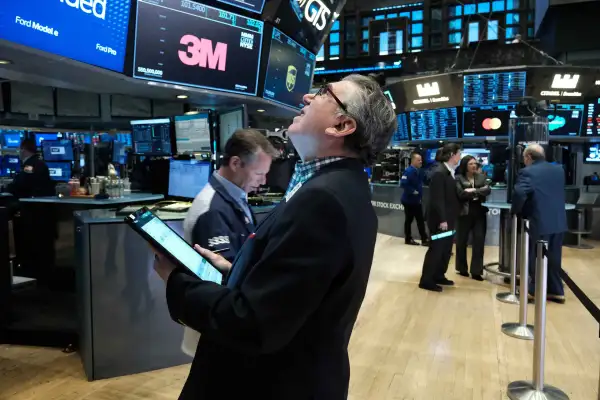Why Stocks Could See a Bump Right After Tax Day
Money is not a client of any investment adviser featured on this page. The information provided on this page is for educational purposes only and is not intended as investment advice. Money does not offer advisory services.

Investors, take note: The stock market could be in for a nice short-term bump.
Data from Bespoke Investment Group shows that Tax Day historically tends to precede a week of healthy performance for stocks.
What the data says
New Bespoke Investment research suggests a tendency for stocks to perform weaker during the early weeks of the second quarter, at the tail end of tax season.
Just how weak the market performs depends on first quarter performance; if the S&P 500 is down going into the second quarter, it averages a rally of just 1.4% in the first two weeks of April. If the S&P 500 is up at the end of the first quarter (like it is this year), early April returns tend to be a much milder 0.2%.
"Whether it’s tax-related or not, there is some historical precedent for April to get off to a weak start, especially in years when the first quarter was positive," the company wrote in its note Monday morning.
Fear not, though. Another report from the company shows that the days following the tax filing deadline in mid-April are a different story.
There are a couple of reasons why this trend might be. The first is that investors who received a tax refund could be injecting that cash right back into the market. Another theory is that earnings season kicks off around the same time.
Here’s what the data, supplied by Bespoke Investment Group, shows about the market’s performance post-Tax Day between 1998 and 2022:
- In 19 out of 25 years, the S&P 500 index has traded positively in the week following the tax deadline.
- During this time frame, the index has seen an average gain of 0.83%. That’s almost three times greater than the one-week median gain throughout the year of 0.31%.
Keep in mind
Overall, the report is a positive signal for investors. However, it’s worth noting that, the stock market has seen dips in the last two years following Tax Day. In 2022, the S&P lost over 2% during this period, making for the second-worst post-tax season week in the 25-year data set (the worst year was 2018, with a loss of nearly 3%). In 2023, the S&P lost about 0.1% in the post-tax season week.
Right before that large decline two years ago, the Federal Reserve had just implemented its first interest rate hike since 2018. Rate hikes, which are used by the Fed to rein in inflation, tend to have investors thinking more cautiously about their finances. Those same rate hikes — if history is any indication — could potentially trigger a recession, giving investors plenty to worry about. To this day, the Fed has not lowered interest rates, likely accounting some for last year's slight decline.
All in all, the next week could be a toss-up: History suggests gains, but the issues that helped to upend the trend in the past two years are still causing investor anxiety today. March's inflation report threatens to keep this trend going, too; with inflation coming in hotter than expected, the Fed is erring toward keeping rates higher for longer and risking a hard landing for the economy.
Of course, the old adage says that past performance is not indicative of future gains, and investors can find virtue in thinking of long-term prospects for stocks, rather than trying to predict short-term movements.
More from Money:
7 Best Online Trading Platforms
Why You Should Think Twice Before Taking Stock Tips From Social Media
Can AI Tools for Picking Stocks Help Investors Beat the Market?
